- Home
- Susan Wittig Albert
The Tale of Castle Cottage
The Tale of Castle Cottage Read online
Table of Contents
Title Page
Copyright Page
Dedication
Epigraph
Chapter 1 - Miss Potter Works Under Difficulties
Chapter 2 - Sarah Barwick Asks a Serious Question
Chapter 3 - Three Spoons, a Broken Engagement, and a New Baby
Chapter 4 - Miss Potter Surveys a Mess
Chapter 5 - In the Castle Farm Barn
Chapter 6 - Lady Longford Is at a Loss
Chapter 7 - The Constable Brings Bad News
Chapter 8 - The Villagers Understand
Chapter 9 - Miss Potter Learns the News
Chapter 10 - At the Adcocks’ Cottage: The Investigation Begins
Chapter 11 - At Slatestone Cottage: Mr. Heelis Has a Few Questions
Chapter 12 - The Secret Life of Bertram Potter
Chapter 13 - Captain Woodcock Goes Fishing
Chapter 14 - Crumpet Takes Command
Chapter 15 - Rats!
Chapter 16 - Speaking of Books . . .
Chapter 17 - Miss Potter and Mr. Heelis Speak from the Heart
Chapter 18 - Mrs. Woodcock Goes Mushroom Hunting
Chapter 19 - “We Few, We Happy Few, We Band of Brothers”
Chapter 20 - A Dinner Party at Tower Bank House
Chapter 21 - The Lost Is Found, or Revelation Revealed
Chapter 22 - An Astonishing Turn of Events
Chapter 23 - Wedding Bells
Historical Note
Resources
Glossary
Recipes
China Bayles Mysteries by Susan Wittig Albert
THYME OF DEATH
WITCHES’ BANE
HANGMAN’S ROOT
ROSEMARY REMEMBERED
RUEFUL DEATH
LOVE LIES BLEEDING
CHILE DEATH
LAVENDER LIES
MISTLETOE MAN
BLOODROOT
INDIGO DYING
A DILLY OF A DEATH
DEAD MAN’S BONES
BLEEDING HEARTS
SPANISH DAGGER
NIGHTSHADE
WORMWOOD
HOLLY BLUES
MOURNING GLORIA
AN UNTHYMELY DEATH
CHINA BAYLES’ BOOK OF DAYS
With her husband, Bill Albert, writing as Robin Paige
DEATH AT BISHOP’S KEEP
DEATH AT GALLOWS GREEN
DEATH AT DAISY’S FOLLY
DEATH AT DEVIL’S BRIDGE
DEATH AT ROTTINGDEAN
DEATH AT WHITECHAPEL
DEATH AT EPSOM DOWNS
DEATH AT DARTMOOR
DEATH AT GLAMIS CASTLE
DEATH IN HYDE PARK
DEATH AT BLENHEIM PALACE
DEATH ON THE LIZARD
Cottage Tales of Beatrix Potter Mysteries by Susan Wittig Albert
THE TALE OF HILL TOP FARM
THE TALE OF HOLLY HOW
THE TALE OF CUCKOO BROW WOOD
THE TALE OF HAWTHORN HOUSE
THE TALE OF BRIAR BANK
THE TALE OF APPLEBECK ORCHARD
THE TALE OF OAT CAKE CRAG
THE TALE OF CASTLE COTTAGE
Darling Dahlias Mysteries by Susan Wittig Albert
THE DARLING DAHLIAS AND THE CUCUMBER TREE
THE DARLING DAHLIAS AND THE NAKED LADIES
Nonfiction books by Susan Wittig Albert
WRITING FROM LIFE
WORK OF HER OWN
THE BERKLEY PUBLISHING GROUP
Published by the Penguin Group
Penguin Group (USA) Inc.
375 Hudson Street, New York, New York 10014, USA
Penguin Group (Canada), 90 Eglinton Avenue East, Suite 700, Toronto, Ontario M4P 2Y3, Canada (a division of Pearson Penguin Canada Inc.)
Penguin Books Ltd., 80 Strand, London WC2R 0RL, England
Penguin Group Ireland, 25 St. Stephen’s Green, Dublin 2, Ireland (a division of Penguin Books Ltd.)
Penguin Group (Australia), 250 Camberwell Road, Camberwell, Victoria 3124, Australia (a division of Pearson Australia Group Pty. Ltd.)
Penguin Books India Pvt. Ltd., 11 Community Centre, Panchsheel Park, New Delhi—110 017, India
Penguin Group (NZ), 67 Apollo Drive, Rosedale, Auckland 0632, New Zealand (a division of Pearson New Zealand Ltd.)
Penguin Books (South Africa) (Pty.) Ltd., 24 Sturdee Avenue, Rosebank, Johannesburg 2196, South Africa
Penguin Books Ltd., Registered Offices: 80 Strand, London WC2R 0RL, England
This book is an original publication of The Berkley Publishing Group.
This is a work of fiction. Names, characters, places, and incidents either are the product of the author’s imagination or are used fictitiously, and any resemblance to actual persons, living or dead, business establishments, events, or locales is entirely coincidental. The publisher does not have any control over and does not assume any responsibility for author or third-party websites or their content.
PUBLISHER’S NOTE: The recipes contained in this book are to be followed exactly as written. The publisher is not responsible for your specific health or allergy needs that may require medical supervision. The publisher is not responsible for any adverse reaction to the recipes contained in this book.
Copyright © 2011 by Susan Wittig Albert.
All rights reserved.
No part of this book may be reproduced, scanned, or distributed in any printed or electronic form without permission. Please do not participate in or encourage piracy of copyrighted materials in violation of the author’s rights. Purchase only authorized editions.
BERKLEY® PRIME CRIME and the PRIME CRIME logo are trademarks of Penguin Group (USA) Inc.
Library of Congress Cataloging-in-Publication Data
Albert, Susan Wittig.
The tale of Castle Cottage : the cottage tales of Beatrix Potter / Susan Wittig Albert.
p. cm.—(The cottage tales of Beatrix Potter)
ISBN : 978-1-101-54384-9
1. Potter, Beatrix, 1866–1943—Fiction. 2. Women authors—Fiction. 3. Women artists—Fiction. 4. England—Fiction. I. Title.
PS3551.L2637T346 2011
813’.54—de22
http://us.penguingroup.com
For every reader who has ever loved
Miss Potter’s Little Books
My gentle Reader. I perceive
How patiently you’ve waited.
And now I fear that you expect
Some tale will be related.
O Reader! had you in your mind
Such stores as silent thought can bring,
O gentle Reader! you would find
A tale in everything.
—WILLIAM WORDSWORTH
Cast of Characters
(* indicates an actual historical person or creature)
People of the Land Between the Lakes
Beatrix Potter* is best known for her children’s books, beginning with The Tale of Peter Rabbit (1901). Miss Potter lives with her parents, Helen and Rupert Potter, at Number Two Bolton Gardens, in South Kensington, London. She spends as much time as possible at Hill Top Farm, in the Lake District village of Near Sawrey. Mr. and Mrs. Jennings and their children live in the Hill Top farmhouse and manage the farm while Miss Potter is in London. Her brother, Bertram Potter, occasionally visits Hill Top.
Will Heelis,* a solicitor, lives in the nearby market town of Hawkshead and is a frequent visitor to Near Sawrey. He and Miss Potter became secretly engaged in The Tale of Applebeck Orchard.
Captain Miles Woodcock and his wife, Margaret Nash Woodcock, live in Tower Bank House. Mrs. Woodcock is the former headmistress of Saw
rey School. Captain Woodcock is the justice of the peace for Sawrey District. Elsa Grape keeps house for them.
Sarah Barwick operates the Anvil Cottage Bakery in Near Sawrey. She is a modern woman who wears trousers and rides a bicycle to deliver her baked goods.
Jeremy Crosfield, a young artist and amateur botanist, is a teacher at Sawrey School. He and Deirdre Malone were married recently and are expecting their first child. They live in Far Sawrey, at Slatestone Cottage. A young woman named Gilly Harmsworth is Deirdre’s friend.
Reverend Samuel Sackett is the vicar of St. Peter’s Church in Far Sawrey. A few months ago, he and Grace Lythecoe were married. Mrs. Hazel Thompson (a cousin of Agnes Llewellyn) keeps house for him.
John Braithwaite is the constable for both Near and Far Sawrey. He and his wife, Hannah, live at Croft End Cottage with their children.
Lester Barrow and his wife, Frances, operate the village pub, the Tower Bank Arms, which is located at the bottom of the hill, below Hill Top Farm. Ruth Safford helps Mrs. Barrow with housekeeping and waits tables in the pub.
Lydia Dowling runs the village shop at the corner of Kendal Road and Stony Lane. Her niece, Gladys, helps out several times a week.
Mrs. Pemberton and her family have moved into Rose Cottage.
Regina Rosier* is an outstanding amateur photographer. (Thanks to the real Regina Rosier for her featured cameo appearance in this book.)
George and Mathilda Crook live at Belle Green, where Mrs. Crook takes in boarders. Mr. Crook is the village blacksmith.
Lady Longford lives at Tidmarsh Manor. Mr. Beever manages the grounds and her ladyship’s horses; Mrs. Beever cooks and manages the household staff. Mr. Depford Darnwell is an antiquarian whom Lady Longford has invited to appraise her deceased husband’s book collection.
Lucy Skead is the village postmistress. She lives with her husband, Joseph (the sexton at St. Peter’s, in Far Sawrey), at Low Green Gate Cottage.
Mr. Bernard Biddle is a local contractor who manages construction projects for people. Among other workers, he employs Mr. Lewis Adcock, a carpenter who lives in Far Sawrey, and Mr. Maguire, who lives near Hawkshead. Mr. Biddle lives at Hazel Crag Farm, where Mrs. Framley keeps house for him.
Other Creatures of the Land Between the Lakes
Crumpet, a handsome gray tabby, is the new president of the Village Cat Council; she makes her home with Bertha Stubbs. Tabitha Twitchit (an elderly calico with an orange and white bib), has recently retired from the position in order to move to the Vicarage with the new Mrs. Sackett. Felicia Frummety lives at Hill Top Farm. Treacle and her kittens live at High Green Gate. Max the Manx lives with Major Ragsdale in Far Sawrey.
Rascal, a Jack Russell terrier, lives with the Crooks at Belle Green but spends his time managing the daily life of the village.
Hyacinth Badger is in charge of The Brockery, a famous animal hostelry on Holly How, and holds the Badger Badge of Authority. Also in residence: Bosworth Badger XVII, former holder of the Badge of Authority (now retired); Hyacinth’s mother, Primrose, chief housekeeper; and Parsley, The Brockery’s chef.
Bailey Badger lives at Briar Bank, where he maintains an astonishing library. Thackeray, a well-read guinea pig, lives there, too. Thorvaald, a teenaged dragon, frequently visits his bookish friends but spends much of his time on assignment for the Grand Assembly of Dragons.
Professor Galileo Newton Owl, D.Phil., is a tawny owl who conducts advanced studies in astronomy and applied natural history from his home in a hollow beech in Cuckoo Brow Wood.
Rooker Rat and his evil gang of ratty friends (Jumpin’ Jemmy, Firehouse Frank, et al.) have invaded Near Sawrey.
PROLOGUE
The Remarkable History of a Book
In this year, fierce and foreboding omens arose over the land of Northumbria. There were excessive whirlwinds and lightning storms, and fiery dragons were seen flying through the sky. These signs were followed by great famine, and on January 8th the ravaging of heathen men destroyed God’s church at Lindisfarne.
—The Anglo-Saxon Chronicle
Our story begins (as do many very good stories) once upon a time and far, far away, in the year of the Lord 793, in a monastery on the Holy Island of Lindisfarne, at the eastern rim of the green and beautiful Britannia. The winter had been stormy and many ominous omens had led the monks to whisper that the hand of God was turned against the world, or their part of it, because they had been misbehaving. They had eaten too well and lain idle too long and enjoyed too much of the fruit of the vine.
The bishop of Lindisfarne, however, was not thinking about the hand of God at this moment. He was crouched behind a stone parapet, clutching his brown woolen cloak with one hand and shielding his eyes with the other.
“Where?” he muttered, peering out across the gray expanse of the North Sea, its waves whipped by an angry wind. “I don’t see them. Where are they?”
“There!” the sentry cried, and pointed.
The bishop followed the pointing finger and saw what he had dreaded to see: far away against the horizon, three great Viking longboats riding the wintry tide inward to the island’s shores, their square sails colored blood-red. He could not make out the fearful dragon-headed prows, but he knew what they looked like and knew also that when the ships had sailed as close as they could, the commanders would drop the sails and all hands would lay on the oars. The light, lean, shallow boats, manned by expert Viking seamen, could maneuver through shallow surf and river estuaries along the coast with ease. They would be upon the undefended monastery in a matter of hours.
A great fear rose up in the bishop’s heart, and he turned to his secretary. “Brother Aelred, sound the alarm and begin the evacuation. The tide will be out soon, which will give our brothers just enough time to cross to the mainland and begin our trek to Norham. Then meet me in the chapel. We must see to the safety of the books.”
Three hours brought the invaders’ ships very near the shore. But by that time the little procession of refugee monks had safely crossed to the mainland and begun moving swiftly up the narrow lane that led north to Norham, near the Scottish border. They bore on their stooped shoulders their most precious possessions: two carved wooden coffins containing the sacred remains of Cuthbert and Eadfrith, beloved bishops of Lindisfarne, and two smaller and even more beautifully carved boxes enclosing the sacred books that Eadfrith—an artist of unparalleled skill—had made.
The books were a marvel, unlike anything that the monks of Lindisfarne (or anywhere else, for that matter) had ever seen. The first—the Gospels of Matthew, Mark, Luke, and John—was composed of 258 vellum leaves carefully prepared from calfskins, exquisitely lettered and gloriously illuminated and sumptuously bound in leather and decorated with silver and hammered gold and precious gems. Eadfrith had used the same plan for his Book of the Revelation of John, except that he had died in the middle of the eighth page, so that was the end of that.
But even though the work was incomplete, all who saw the Lindisfarne Gospels and Revelation were breathless with admiration—as were the monks, who treasured this precious legacy and vowed to keep it out of the hands of infidels. They would take it with them wherever they went, even to the ends of the earth.
They didn’t have to go quite that far, but almost. The abbot at Norham discovered that it wasn’t easy to feed a multitude of monks without a miracle of loaves and fishes, which he couldn’t quite manage. So the Lindisfarne crew packed up the bones of Cuthbert and Eadfrith and their beloved books and set off again, wandering through the north of England and having a great many adventures until, as the story goes, they came at last to the shore of the River Wear. They stopped to have a bite of lunch, but when they got up to leave, Cuthbert’s coffin had become so heavy that no amount of huffing and puffing would move it. The monks quite rightfully took this as a sign (wouldn’t you?) that they were supposed to stay where they were. They cut down a few trees and built a wooden shelter to keep the rain off and prepared to live a lonely life in the wood
s.
But people will talk, and the tale of that miraculously immobile coffin naturally got around. Soon, pilgrims were arriving from all over northern England, eager to see Cuthbert’s coffin and the splendid books created by Eadfrith. It wasn’t long before a grand stone church, Durham Cathedral, was erected nearby and the bishops’ coffins placed in ornate tombs, where people brought offerings of gold and jewels in hopes that Cuthbert (who by this time was considered a saint) would cure them or save them or give them sons or another piece of property. Eadfrith’s books were settled, too, in the cathedral library (where you could see them if you had a library pass), and all was peace and quiet.
It didn’t last. Several hundred years later, Henry VIII looked around his kingdom and noticed that the monasteries had accumulated a great deal of gold and property. He was in the mood to go to war with France and needed quite a lot more money than he had, so he ordered the abbots and bishops to hand it over. The vast properties were sold or given to the king’s best friends and supporters, and the gold and jewels went straight into the king’s capacious pockets.

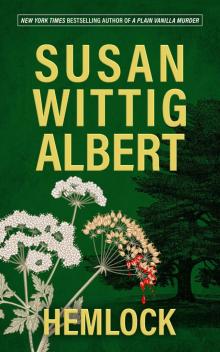 Hemlock
Hemlock Chile Death
Chile Death The Tale of Briar Bank
The Tale of Briar Bank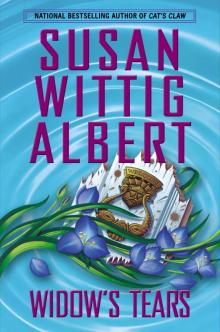 Widow's Tears
Widow's Tears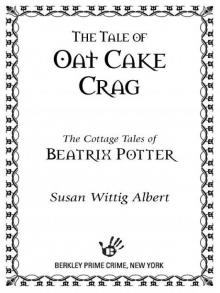 The Tale of Oat Cake Crag
The Tale of Oat Cake Crag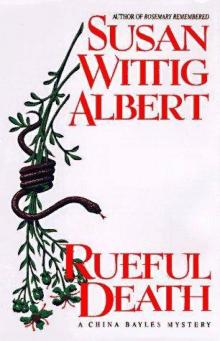 Rueful Death
Rueful Death Bittersweet
Bittersweet The Darling Dahlias and the Poinsettia Puzzle
The Darling Dahlias and the Poinsettia Puzzle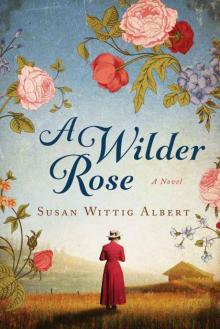 A Wilder Rose: A Novel
A Wilder Rose: A Novel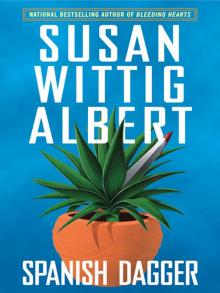 Spanish Dagger
Spanish Dagger The Darling Dahlias and the Texas Star
The Darling Dahlias and the Texas Star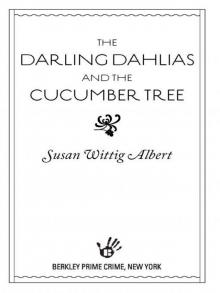 The Darling Dahlias and the Cucumber Tree
The Darling Dahlias and the Cucumber Tree China Bayles' Book of Days
China Bayles' Book of Days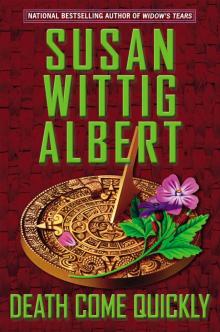 Death Come Quickly
Death Come Quickly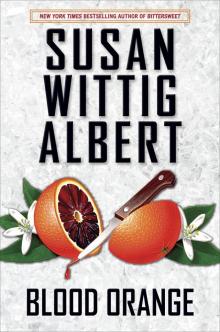 Blood Orange: A China Bayles Mystery
Blood Orange: A China Bayles Mystery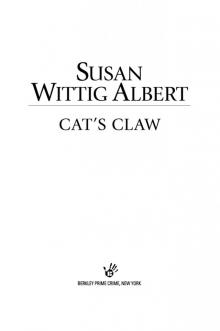 Cat's Claw
Cat's Claw The Darling Dahlias and the Naked Ladies
The Darling Dahlias and the Naked Ladies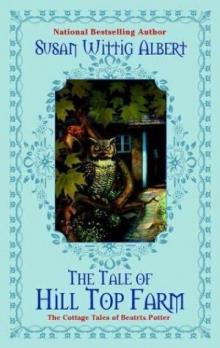 The Tale of Hill Top Farm
The Tale of Hill Top Farm The Darling Dahlias and the Confederate Rose
The Darling Dahlias and the Confederate Rose The Darling Dahlias and the Silver Dollar Bush
The Darling Dahlias and the Silver Dollar Bush The General's Women
The General's Women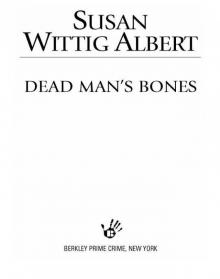 Dead Man's Bones
Dead Man's Bones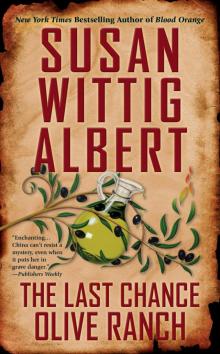 The Last Chance Olive Ranch
The Last Chance Olive Ranch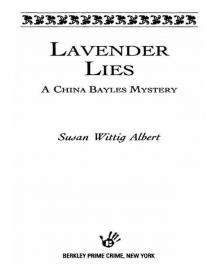 Lavender Lies
Lavender Lies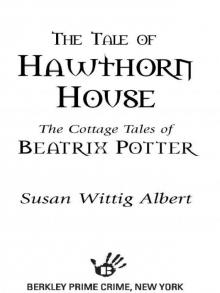 The Tale of Hawthorn House
The Tale of Hawthorn House The Tale of Castle Cottage
The Tale of Castle Cottage Rosemary Remembered - China Bayles 04
Rosemary Remembered - China Bayles 04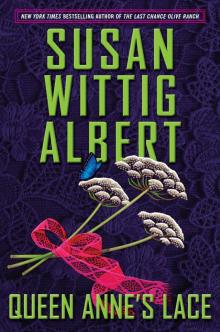 Queen Anne's Lace
Queen Anne's Lace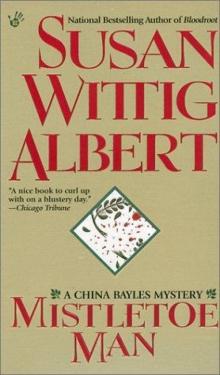 Mistletoe Man - China Bayles 09
Mistletoe Man - China Bayles 09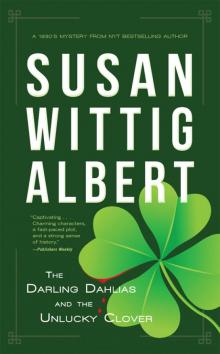 The Darling Dahlias and the Unlucky Clover
The Darling Dahlias and the Unlucky Clover Mourning Gloria
Mourning Gloria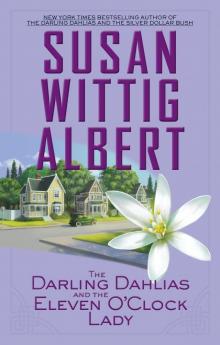 The Darling Dahlias and the Eleven O'Clock Lady
The Darling Dahlias and the Eleven O'Clock Lady